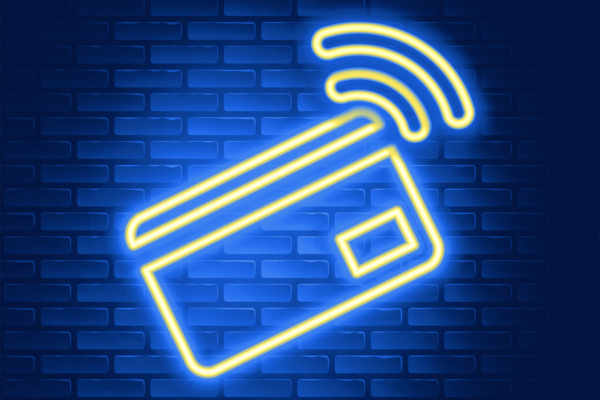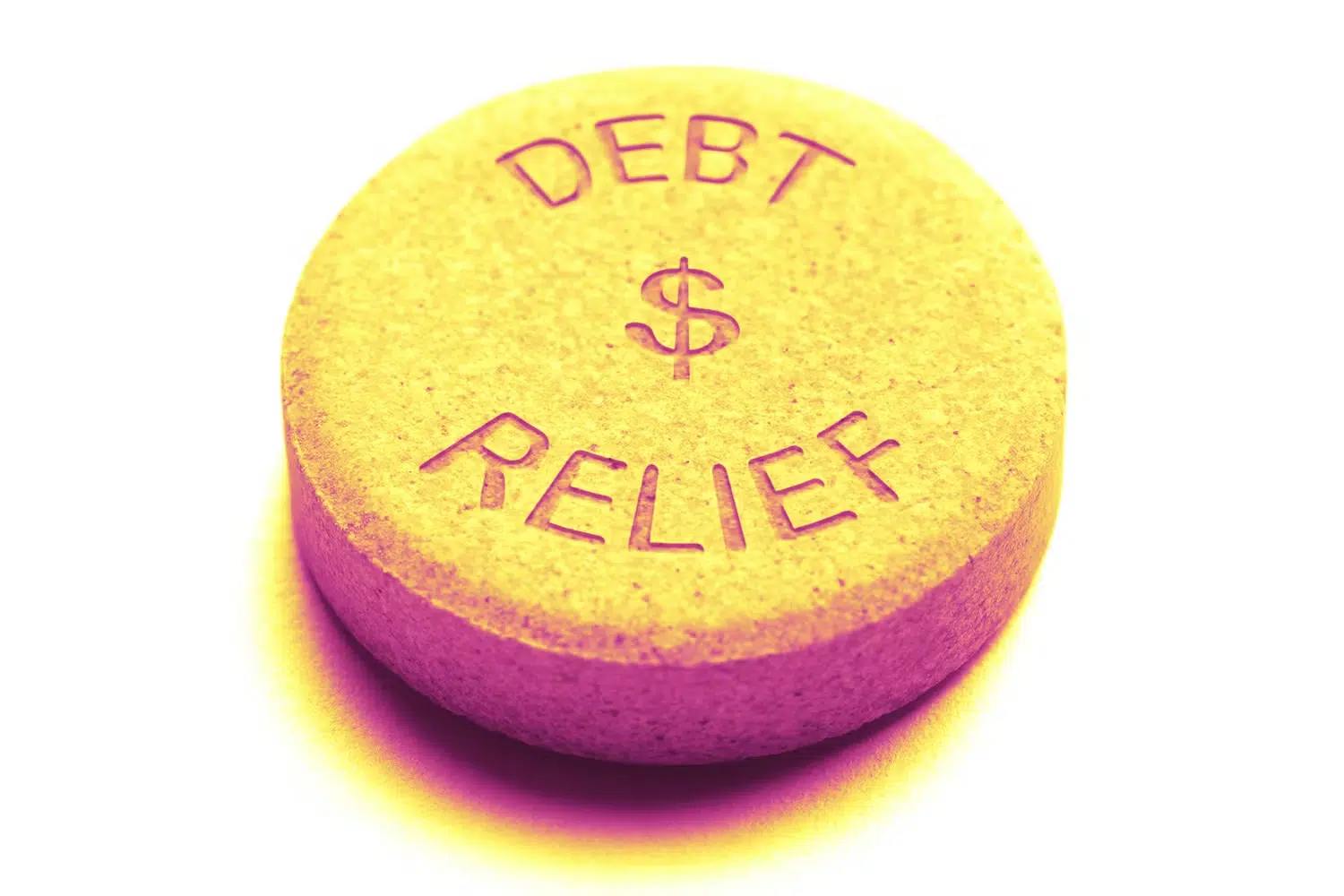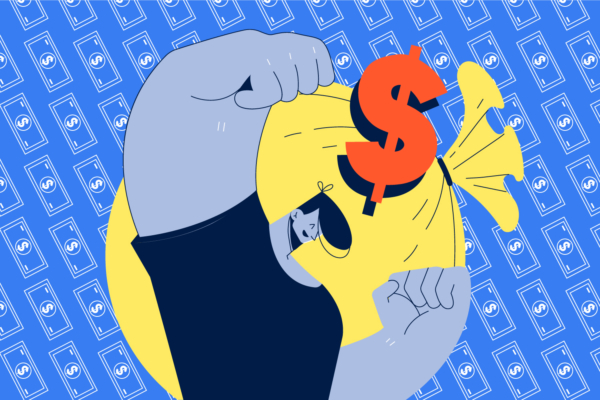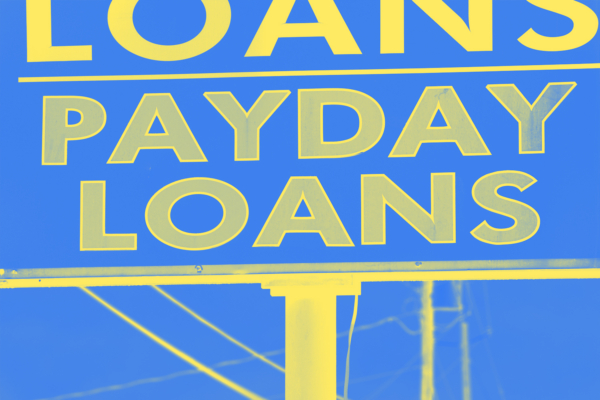
Stop the Spiral: Get Your Debt Under Control

If you’re in debt, you’re in the same boat as 77% of Americans, who carry a combined total of $14.9 billion in consumer debt from mortgages, auto loans, credit cards, and student loans. If you look at credit cards alone, the average card balance in the United States is $5,525 as of 2021. And thanks to high-interest rates, it can be hard to see the light at the end of the tunnel— even if you start out with a relatively small balance.
If you have any amount of debt, you may have several questions like:
- How do I know when my debt is out of control?
- What is debt consolidation and how does it work?
- What are some ways to lessen my debt burden?
In this article, we’ll break down the answers to these questions. It might be overwhelming to look at your debt head-on, but there are steps you can take to stop the spiral.
Related Articles
Our “Take Control of Your Finances” series covers financial planning and budgeting.
9 Signs Your Debt Problems Are Getting Out of Control
Don’t wait until you’re sent to collections or face bankruptcy or foreclosure to work on eliminating your debt. Here are some signs that you should start taking action now and make a plan to pay down your debt.
- Your combined credit card balances exceed 30 percent of their combined available limits. This is also known as your credit utilization rate.
- Your credit rating has been downgraded. If your credit score has been going down consistently over the last few months, it’s worth checking your credit report for errors or new accounts, as well as making sure you have a clear understanding of your current debts.
- Instead of paying down your balance, you’re frequently transferring a balance to other credit cards or borrowing money to make loan payments.
- You’re having to decide which credit and loans to pay each month, skipping payments on some.
- You are barely making minimum payments.
- You’re avoiding your credit card statements because they’re too overwhelming.
- Your debt grows each month.
- Some of your accounts are past due, incurring even more interest.
- Some of your cards are completely maxed out.
If you’re feeling overwhelmed after reading that list, take a deep breath. Remember: you’re not alone, and there is a way out of debt.
First Steps to Pay Off Debt
Ok, so you’re going to tackle that debt. Think about what your financial life will look like after that debt is gone. You’ll be able to save a cushy emergency fund, put more money toward retirement, save for a down payment on a house—whatever you choose, keep that goal in mind as you move forward.
1. Create a budget.
If you haven’t already, create a budget to keep track of your spending and saving habits. It is singlehandedly the best thing you could do for your financial health. After looking at everything coming in and going out, you may find that you can cut out some expenses and redirect that money towards paying off debt every month. You won’t know what changes you can make until you get a clear overhead view of your financial situation.
2. Get in contact with your creditor or lenders.
Contact creditors to see if you can negotiate better interest rates or different loan terms. This is a task made easier if your payment history and/or credit rating are strong. It’s not guaranteed that the creditor or lender will work with you, but you may be surprised what you can get if you just ask.
3. Get guidance from a debt counselor or a debt management plan.
Many nonprofits offer debt management plans (DMPs), counseling and will negotiate with creditors to help you secure lower interest rates, lower or no late fees, and/or more affordable monthly payments. There are multiple non-profits that can help you find a place to start: National Foundation for Credit Counseling and Financial Counseling Association of America. Both of these organizations have a large network of certified financial counselors who are ready to help you.
Here’s how a DMP works:
With a DMP, you send one payment to the agency and it splits it among your creditors, usually under a 3 to 5-year plan. Establishing a DMP may hurt your credit rating temporarily, but paying off your debt helps rebuild it over time. There may be a small fee to start your DMP, but be sure to ask what fees are involved before you sign up.
Please be aware: nonprofit DMPs are very different from “debt consolidation services”. Debt consolidation services can often be predatory or even scams; these services are not the same thing as using a personal loan or home equity loan to consolidate your debt. Be sure to do thorough research on what the service is, what they charge, and how they’re going to handle your debt.
4. Transfer your credit card balance to a zero-interest card.
If your credit history is good, you may find a zero-percent interest credit card on which to transfer your high-interest credit card balances. With an introductory 0% APR, you’ll have a specific period of no interest that you can use to pay down the card without even more interest accruing.
This method is only beneficial if you have a good handle on your current finances. If you feel like your spending or financial obligations would prevent you from paying off the card balance before the 0% period ends, it’s probably not the right solution for you.
Debt Consolidation Loans
Another way to make your debt seem less daunting is to consolidate it. When you consolidate debt, you’ll pay off your high-interest accounts using the funds from a lower-interest loan. You’ll still owe the same amount, but you’ll pay less interest over time. It’s a bigger step to take, but depending on the amount of debt you have, it might be the best course of action for you.
Some of the most popular loans for debt consolidation are:
- Home equity loans (secured)
- Clear title auto loans (secured)
- Personal loans (unsecured)
We’ve noted “secured” or “unsecured” because this qualifier can have a significant difference on how the loan is borrowed.
Secured vs Unsecured Loans for Debt Consolidation
It’s important to understand the difference between secured and unsecured loans.
Secured loans—such as home equity loans or clear title auto loans—are easier to obtain because they use something valuable you own (i.e. your house or vehicle) as collateral. They typically offer lower interest rates, higher balances, longer repayment times, and sometimes tax-deductible interest, but with an important condition: you could lose your asset if you default.
Unsecured loans—such as personal loans— require no collateral but typically offer higher interest rates, lower balances, and shorter repayment intervals. However, if your credit score is low, they can be harder to obtain.
Keep in mind that the ease in securing such loans, and the terms involved, will depend on your credit history, whether you’ve made regular payments on your credit cards, and whether you have a cosigner.
Always be sure to compare lenders’ rates, fees, and loan intervals before making a decision, and be realistic about the payment you can make each month over the life of the loan.
Benefits of Debt Consolidation
Getting a loan to consolidate debt only makes sense if the new loan offers a better interest rate than you’re already paying. You’ll also have to make some lifestyle adjustments, to make sure you don’t continue to add debt to your overall total.
Here are just some of the benefits of debt consolidation:
- Consolidation could improve your credit rating since your score is partly based on the percentage of total credit capacity you’re using.
- It may also shield you from exorbitant interest rates, reduce or eliminate pressure from creditors, and discipline you to save funds for that one monthly payment.
- You can also incorporate other debt into your loan, including utility and/or medical bills.
What to Avoid When Dealing with Debt
There are a few things you’ll want to be on the lookout for when repaying your debt.
Try and avoid taking out a payday loan as a form of temporary relief. Though it may sound like a temporary fix, payday loans can cause more headaches down the road because of the high interest involved. You might take out a loan for only $500, but you’ll end up paying thousands of dollars instead.
Similarly, debt settlement or bankruptcy should be last resorts since they severely impact your credit rating for at least seven years. Before you take these steps, be sure to educate yourself on their legal restrictions and consequences.
Get Back on Track
Debt can exist for so many reasons. You might have experienced a long bout of unemployment, a string of household emergencies, or even a period of unstable income—debt looks different for everyone. Just like debt looks different, the ways of paying it down do too!
The most important thing is to find a system that works for you. By reading this post today, you’ve already taken a huge step forward.
Looking for a new credit union?
Become a member today!



